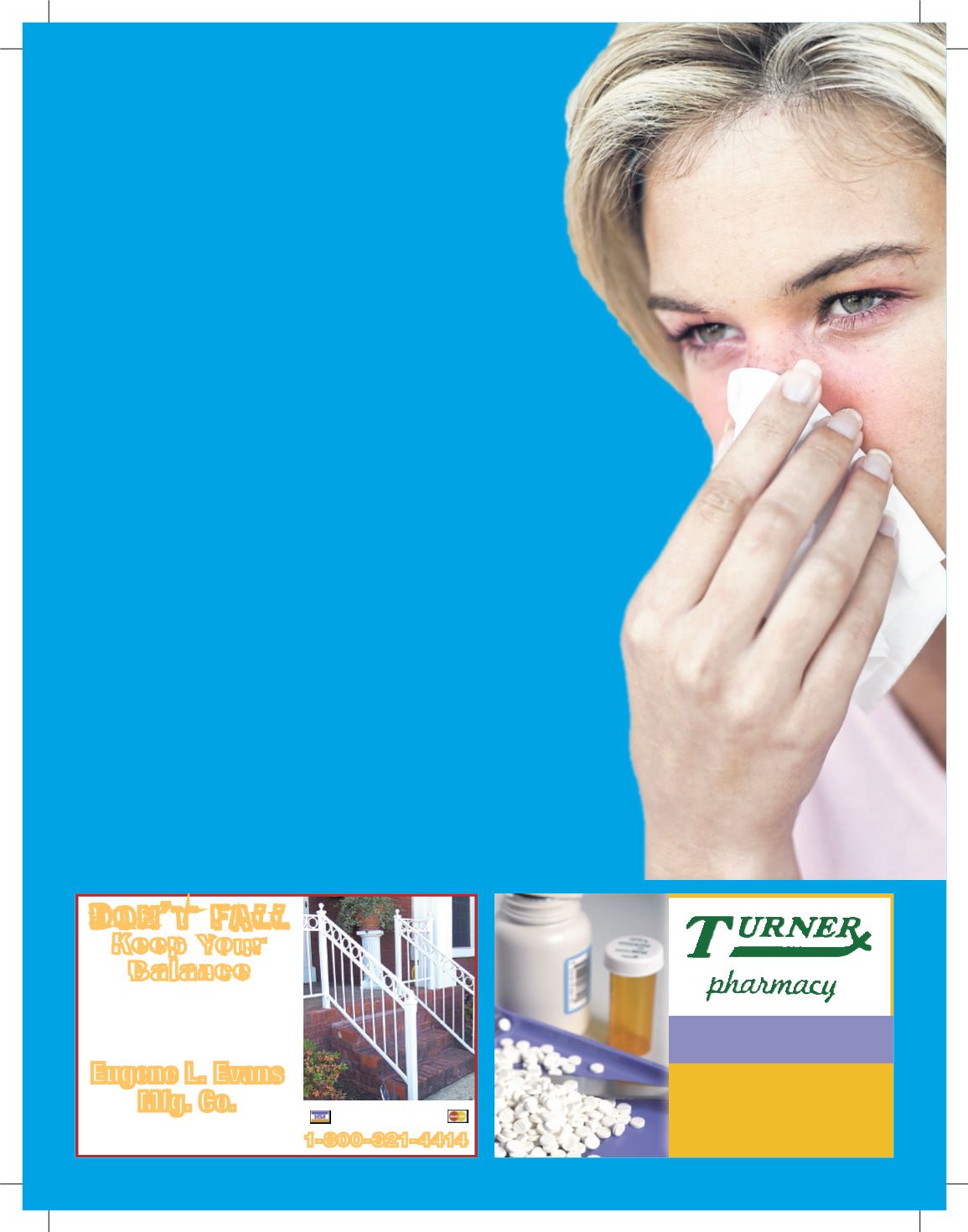

7
821 Dixie Street,
Carrollton, GA 30117
770-832-7076
Gifts
Drive thru Service
Free Delivery
1-800-321-4414
FREE
ESTIMATES
DON’T FALL
Keep Your
Balance
Eugene L. Evans
Mfg. Co.
Serving West Georgia Since April 1950
401 S. Noble St Anniston, AL
with
Ornamental
Iron Handrails
Custom made for your
home or business
T
hough the holiday season is a joyous time
of year, it’s also one when many people
succumb to cold and flu. Spending so
much time indoors in close proximity to
others can increase a person’s susceptibility
to flu and cold, so it’s no surprise that the
holiday season, when many people spend lots
of time celebrating indoors with family and
friends, marks the unofficial start to cold and
flu season.
Despite what Mom might have told you
about going out into the cold with a wet head
or leaving home without wearing a coat, such
actions do not increase your risk for cold
and flu. But being cooped up indoors, where
germs from others who are sick can fester,
can increase that risk.
Cold weather also can be a factor, but not
for the reason you think. According to a 2007
study from researchers at Mount Sinai School
of Medicine, the influenza virus is more
stable and can stay in the air longer when the
air is cold and dry. Dr. Peter Palese, a flu
researcher who is professor and chairman
of the school’s microbiology department,
examined guinea pigs infected with the flu
virus to determine the connection between
the flu and cold weather. Dr. Palese varied the
air temperature and humidity in the guinea
pigs’ environment and determined that flu
transmission was best at 41 degrees, while
the prevalence of transmission declined as the
temperature rose. By the time temperatures
reached 86 degrees, the virus was not
transmitted at all. Low humidity also helped
transmit the virus, and high humidity stopped
the spread. Flu viruses spread through the
air in water droplets expelled from sick
individuals’ noses and mouths. High humidity
may cause these droplets to fall to the ground
before they can infect someone else.
Colds are largely transmitted through
surface contact with the virus or direct contact
with a sick individual.
The cold virus is then
contracted on the
hands and typically
transferred to the nose,
eyes or mouth through
inadvertent touching of
these areas. Spending time
indoors in close quarters
with other people, which is
more common in the winter,
can facilitate the spread of colds
as well as the flu virus.
There are many ways to reduce
your risk of contracting a cold or the flu
virus this winter. Perhaps no preventive
measure is more effective than getting a
flu shot. In addition, wash your hands
frequently to prevent the spread of germs,
and disinfect remote controls, computer
keyboards, tablets, mobile phones,
and other items that are handled by
multiple people on any given day.
In addition, spend as much time
outdoors as possible so you can
escape potentially contaminated
indoor air.
If you come down with the
flu, increase the humidity
in your home by running
the shower with the door
open, using a recreational
aquarium or boiling pots of
water. Maintain a warm indoor
temperature to reduce the
likelihood that the flu virus will
spread.
Other ways to reduce your
risk for cold and flu include:
• maintaining a healthy diet
• getting several minutes of
sunlight per day
• exercising regularly.
Prevent colds and flu
before they start
















